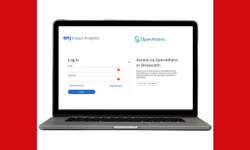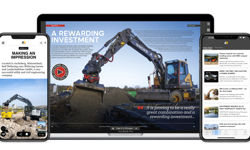
Whether it is the valuations attached to recurring revenue streams or visibility in the current inflationary environment, there are clear reasons why every publisher needs to develop their subscription offerings.
The metrics to measure success are well known, but which frameworks and processes can you put in place to drive revenues on established products? How can you justify price rises to clients?
At Risk Global – an Infopro Digital company with over £20m of subscriptions revenue – we’ve adopted three main approaches to growing our subscriptions revenues.
1. Have a multi-tiered product offering
The products within the portfolio that perform strongest all have multiple product tiers, adopting the ‘Good, Better, Best’ pricing model. This model is not new, and examples from other industries are everywhere you look – from TV subscription packages to flights to own-brand supermarket labels, all clearly targeting different audience segments.
Each level unlocks higher-value content and features, better product functionality, and are priced accordingly. In a publishing environment, our rationale for adopting this strategy is straight-forward.
- Internally, it forces you to think about which areas you should develop. Naturally, improving the ‘Better’ or ‘Best’ option increases the opportunities to upgrade existing subscribers, and brings new customers in at a higher yield.
- It gives the sales team an additional route to drive growth on larger accounts. As well as finding more users or increasing price, upgrading users within a contract can result in significant overall growth.
- If a quick decision is being made, there is a propensity to buy the higher-yielding middle option to avoid being seen as frugal or frivolous.
In terms of hard results, over the course of five years, one of our products has gone from a split of 90% (good) / 10% (better) when we had two product bundles, to 30% (good) / 60% (better) / 10% (best) following the introduction of three.
2. Invest in continuous product development
Once the product tiers are in place, it’s critical to create development plans for each of the bundles to understand where you are investing time and effort. Internally, we break that product development down into two groups.
The first group are features, and the aim here is to identify low-cost improvements that appeal to a wide audience and can be added to each product tier. These don’t particularly drive long-term value, but they are critically important in justifying price rises.
If you can demonstrate investment in the product, you can anchor your renewal conversations with clear demonstrable improvements, moving the conversation to product value rather than price. Our aim is at least one feature upgrade per quarter, and examples include new / updated newsletters, website UX and app updates – most of which are all a matter of course for publishers, we just forget to talk about them to clients and hope they notice.
The second group, driving long-term value, are the game changers. The product enhancements or extensions that solve market problems for specific audience segments. At Infopro Digital, we have prioritised high-value data products to complement traditional editorial content and deepen brand relationships.
But how do you identify and develop the enhancements that deliver long-term value? This is not an exhaustive list, but there are a number of ways to start the process:
- Get into the habit of regular subscriber feedback calls – understand your customers and their pain-points. Ask questions you might not like hearing the answer to – what your current product does or doesn’t do, which parts they value, which parts they don’t. Ask them about their day-to-day roles and the challenges they face.
- Review your subs file; identify cohorts with high-yield, high usage, and / or high propensity to renew. Find out what’s driving their habits and behaviour.
- Invite feedback and new product ideas from the broader editorial and commercial teams – they spend their lives speaking to clients.
- Review competitors’ offerings to identify gaps in the market.
At Risk.net, despite having a complex audience make-up, our two core user groups are front office sales / trading teams, and the risk management functions who implement institutional controls. That led us, unsurprisingly, to develop two new subscription packages – ‘Risk Management’ and ‘Front Office’. Put simply, this helps our audience self-identify the subscriptions package designed for them and it also means we deprioritise any ideas outside of these two areas.
Risk Management
The Risk Management package has evolved over a five-year timeframe. The initial differentiator was books and journals content but it now also includes three additional data products:
- Risk Quantum: a database and news service that details company performance against risk metrics. This enables subscribers to benchmark performance against their unique competitive set.
- Risk Scenarios: borne out of the pandemic, this product crowd-sources data from our subscribers, enabling banks to model outlying scenarios and avoid established group think.
- OpRisk benchmarking: helping organisations gauge their frameworks, controls and technology against peers.
Risk Front Office
The launch of the Front Office package was underpinned by a new data service called Counterparty Radar. This service uses datasets from regulatory filings which need to be cleaned and standardised, and Risk.net uses its objective position in the market to query market participants and provide commentary.
Having launched the service 18 months ago, this product itself now benefits from the same thinking that helped us arrive at it in the first place. Numerous feature enhancements have been added (different data views, download options, new instruments) but the focus has been on high-value additions, such as new markets / jurisdictions, and the recent launch of a Dealer Rankings product built on the existing data.
The Risk Management and Front Office products aren’t important here – they are included for two reasons. The first is to reinforce the initial point about product tiers. Launching those product extensions without the segmentation in place would result in a collection of disparate data services that aren’t relevant to large sections of the subscriber base. Far better to segment and signpost them. Better still to charge a premium to access them.
The second is to illustrate that there are numerous ways to launch data services. The ones outlined here are a mix of public and proprietary datasets with use cases ranging from benchmarking, modelling, prospecting, and regulation.
If you are a traditional publisher, your teams will have the market knowledge to build these products. However, you do need to bear in mind that delivering a data service is different to traditional publishing. It pays to go into it with your eyes open as the metrics, technology, timeframes, data structuring, controls, and governance, as well as the sales and marketing effort needed to trial, pitch, sell and renew them are all different skillsets that either need to be learned or acquired.
3. Introduce membership offerings
The final route we’ve pursued to grow subscription revenue is to introduce membership offerings. Our most successful example of this is the Central Banking Institute, launched during the pandemic.
The characteristics and buying processes of your market are extremely important here. Those that made central banks ideal for us were that they are a small, clearly defined group, who are information hungry and have barriers to networking. It also helped that each central bank faced challenges without precedent brought about by Covid-19.
We had researched an idea to provide a benchmarking service so decided to use this launch to overhaul our existing subscription and training products and to introduce the membership offering.
Three membership tiers were devised, each comprising differing access levels and features of the three main product components: insight (existing editorial content), benchmarking (new product), and learning (existing training courses). The sales teams were re-organised into one single team, selling at an institutional level. A step change in pricing was also introduced, moving from selling subscription packages (c.£10k) and individual training course places (c.£2k) to a new entry level price of £35k including benchmarking.
The single biggest learning is the change in mindset required. Strong relationships with learning and information resource departments were already in place. But these were mainly transactional. To sell a cross-departmental membership service requires buy-in from senior stakeholders, which required a shift to institutional mapping, influencing, pitching and consultative selling.
To those used to talking a librarian through a £10k renewal, conducting a product demo to a senior leadership team, whose first language may not be English, whilst asking for a seven-fold price increase, was daunting. A huge amount of product training and pitch rehearsal was crucial. A big success factor was not sticking rigidly to the packages but listening to banks and tailoring the service by institution around their learning needs and organisational goals.
As a result, client relationships are now deeper than they have ever been. And these relationships have led to other opportunities presenting themselves. Be that bespoke learning for institutions, a digital training series covering the principles of central banking, or partnering with institutions to run our traditional conferences in their country, hosted by them.
Overall, the results have been transformational. On a mature product, the brand has doubled recurring revenue to 80% – on revenues that have doubled themselves.
In summary, the beauty of subscriptions products is that whilst they aren’t easy to launch, once you have them, there are numerous routes to grow. The key, as always, is understanding your market and the real pain-points that you are looking to solve. If you can get into the discipline of continuous NPD – across a mixture of product features, enhancements and extensions – you can continue to deepen relationships with clients, increase yield, and, more importantly, benefit from the visibility that high value renewal rates bring.
This article was first published in InPublishing magazine. If you would like to be added to the free mailing list to receive the magazine, please register here.












